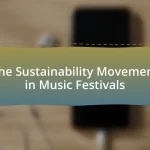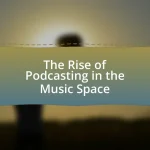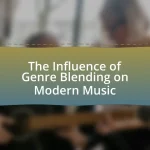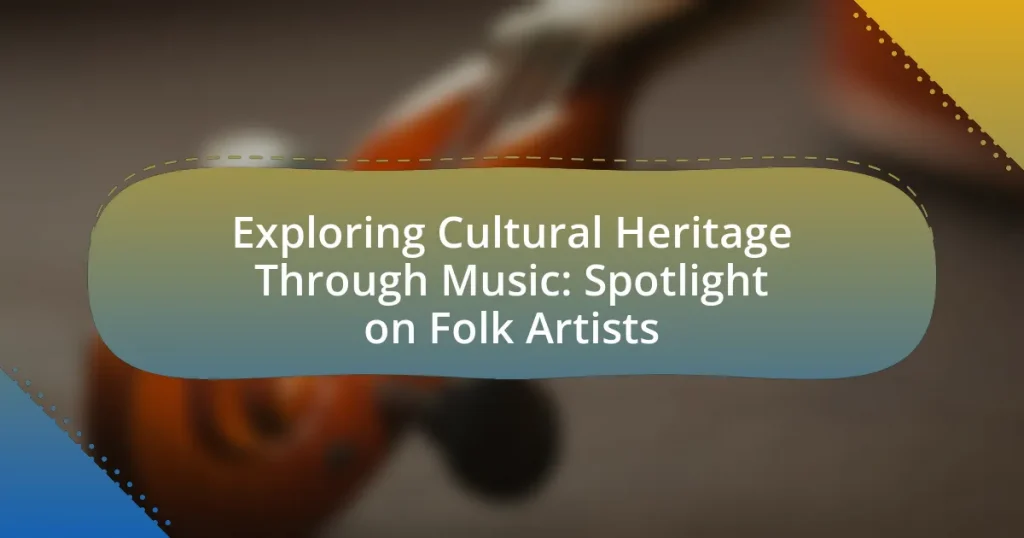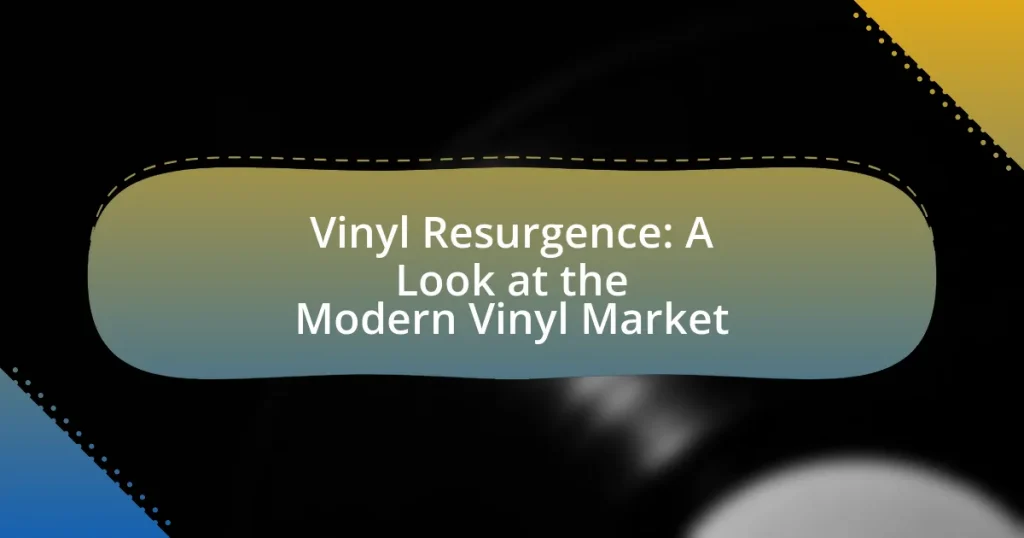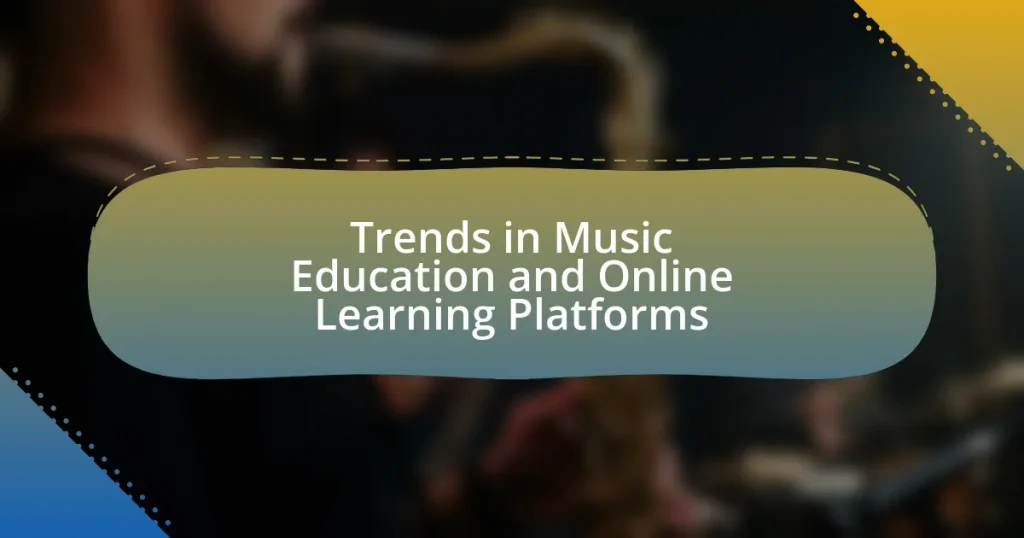Cultural heritage encompasses the traditions, customs, and artifacts passed down through generations, with music serving as a crucial expression of this heritage. The article explores the connection between cultural heritage and music, particularly focusing on folk music as a medium for cultural expression and preservation. It highlights the role of folk artists in maintaining cultural narratives, the significance of folk music in understanding community identity, and the techniques used by artists to convey cultural stories. Additionally, it discusses ways to engage with and appreciate folk music today, emphasizing the importance of live performances, community involvement, and support for local artists in preserving these cultural traditions.
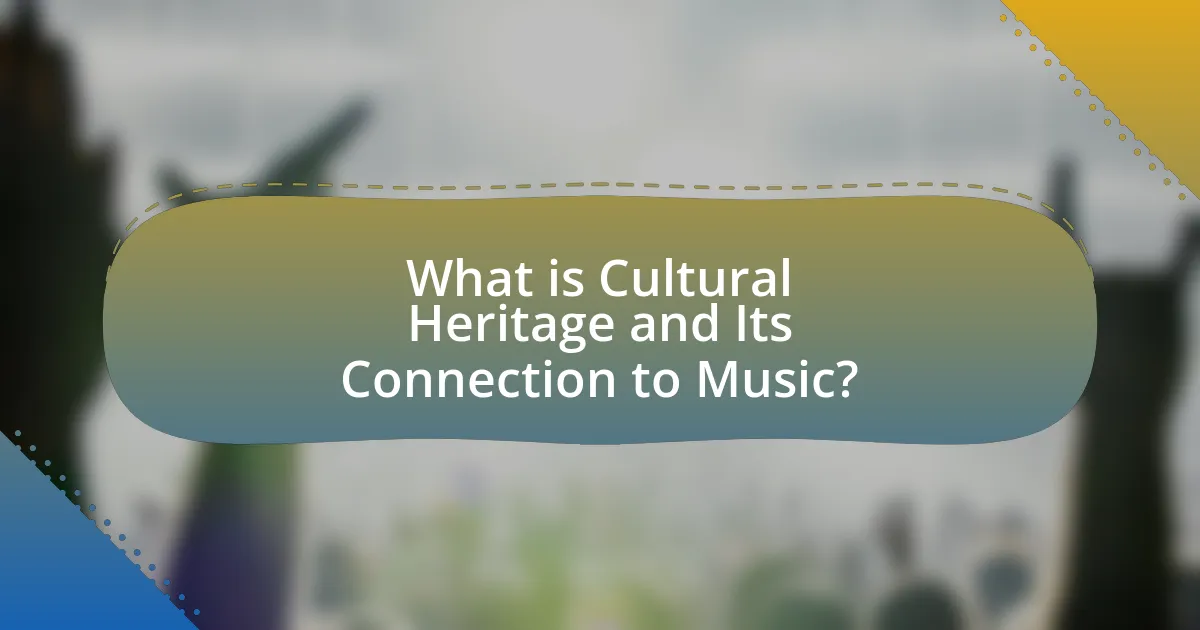
What is Cultural Heritage and Its Connection to Music?
Cultural heritage refers to the traditions, customs, practices, and artifacts that are passed down through generations, encompassing both tangible and intangible elements. Music serves as a vital expression of cultural heritage, reflecting the values, beliefs, and historical experiences of a community. For instance, folk music often embodies the stories and struggles of a people, preserving their identity and fostering a sense of belonging. Research indicates that music plays a crucial role in cultural transmission, as it can evoke memories and emotions tied to specific cultural practices, thereby reinforcing communal ties and continuity.
How does music serve as a medium for cultural expression?
Music serves as a medium for cultural expression by encapsulating the values, beliefs, and traditions of a community. It reflects the historical context and social dynamics of a culture, allowing individuals to convey their identity and experiences. For instance, folk music often incorporates local languages, instruments, and storytelling techniques that are unique to specific regions, thereby preserving cultural heritage. Studies have shown that music can evoke emotional responses tied to cultural narratives, reinforcing communal bonds and shared histories. This connection is evident in various cultural festivals where music plays a central role in celebrating and transmitting cultural practices.
What elements of culture are reflected in folk music?
Folk music reflects various elements of culture, including traditions, values, social norms, and historical narratives. These musical forms often incorporate local dialects, instruments, and themes that resonate with the community’s identity. For instance, the use of specific instruments like the banjo in American folk music or the sitar in Indian folk music highlights regional characteristics. Additionally, folk songs frequently convey stories of everyday life, struggles, and celebrations, serving as a medium for cultural transmission and preservation. This connection to cultural heritage is evident in the way folk music is passed down through generations, maintaining the community’s collective memory and identity.
How does folk music preserve historical narratives?
Folk music preserves historical narratives by encapsulating stories, events, and cultural practices within its lyrics and melodies. This genre often reflects the experiences and traditions of specific communities, serving as a medium for passing down knowledge across generations. For instance, songs like “This Land Is Your Land” by Woody Guthrie convey social and political themes relevant to American history, illustrating how folk music can document societal issues and collective memories. Additionally, folk music often incorporates regional dialects and instruments, further grounding its narratives in the historical context of the communities from which it originates.
Why is folk music significant in understanding cultural heritage?
Folk music is significant in understanding cultural heritage because it serves as a repository of a community’s history, values, and traditions. This genre often reflects the social, political, and economic contexts of the time, preserving narratives that might otherwise be lost. For instance, the ballads and songs of the Appalachian region encapsulate the struggles and stories of early settlers, providing insight into their lives and beliefs. Additionally, folk music often incorporates local dialects and instruments, further grounding it in specific cultural contexts. This connection to place and identity makes folk music a vital tool for cultural preservation and education.
What role do folk artists play in cultural preservation?
Folk artists play a crucial role in cultural preservation by maintaining and transmitting traditional art forms, music, and storytelling that embody the values and history of their communities. They serve as custodians of cultural heritage, often performing and teaching traditional practices that might otherwise be lost. For instance, folk artists often participate in festivals and community events, where they showcase traditional music and crafts, thereby fostering intergenerational knowledge transfer. This practice is supported by research indicating that folk music and art contribute significantly to community identity and cohesion, as seen in studies conducted by the Smithsonian Institution, which highlight the importance of folk traditions in sustaining cultural diversity.
How does folk music contribute to community identity?
Folk music contributes to community identity by preserving cultural traditions and fostering a sense of belonging among members. It serves as a medium through which shared histories, values, and experiences are expressed, reinforcing communal ties. For example, in many cultures, folk songs encapsulate local stories, dialects, and customs, which help to maintain a unique cultural identity. Research indicates that communities with strong folk music traditions often exhibit higher levels of social cohesion and collective memory, as these musical forms facilitate intergenerational transmission of cultural knowledge. This connection between folk music and community identity is evident in various cultural festivals where local folk music is celebrated, further solidifying the community’s distinct identity.
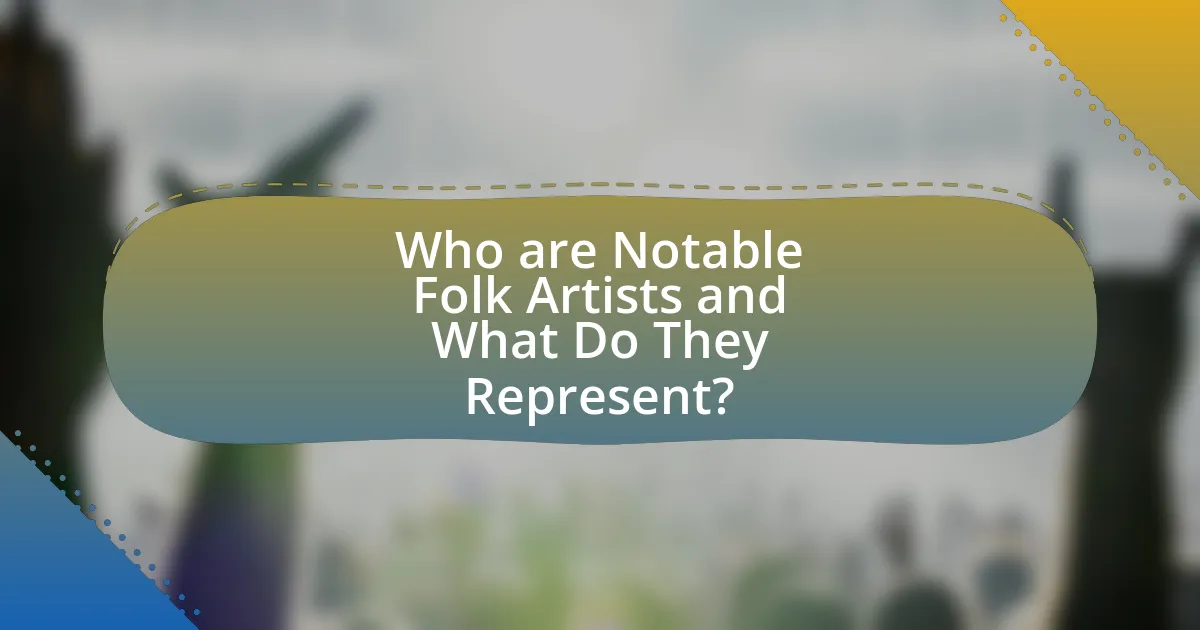
Who are Notable Folk Artists and What Do They Represent?
Notable folk artists include Woody Guthrie, Pete Seeger, and Joan Baez, who represent the cultural heritage and social issues of their respective communities through music. Woody Guthrie is known for his songs that reflect the struggles of the working class during the Great Depression, while Pete Seeger emphasized social justice and environmental causes in his folk music. Joan Baez is recognized for her contributions to the civil rights movement and anti-war activism through her powerful vocal performances. These artists not only preserve traditional folk music but also use their platforms to address contemporary social issues, thereby enriching the cultural narrative.
What are the defining characteristics of prominent folk artists?
Prominent folk artists are characterized by their deep connection to cultural traditions, storytelling, and community engagement. These artists often draw inspiration from their cultural heritage, using music as a medium to convey historical narratives and social issues relevant to their communities. Their work typically features acoustic instruments and simple melodies, reflecting the accessibility of folk music. Additionally, prominent folk artists often prioritize authenticity and emotional expression, allowing their personal experiences and cultural backgrounds to shape their artistic output. This emphasis on tradition and community is evident in the way they perform, often engaging audiences in participatory experiences that foster a sense of belonging and shared identity.
How do their backgrounds influence their music?
Folk artists’ backgrounds significantly influence their music by shaping their lyrical themes, instrumentation, and stylistic choices. For instance, artists from rural areas often incorporate local dialects and traditional instruments, reflecting their cultural heritage and community experiences. This connection to their roots can be seen in the works of artists like Woody Guthrie, whose songs often addressed the struggles of the working class during the Great Depression, drawing from his own experiences and the socio-economic conditions of his upbringing. Additionally, cultural traditions and historical events in an artist’s background can lead to the incorporation of specific musical scales, rhythms, and storytelling techniques that resonate with their heritage, as evidenced by the use of African rhythms in the music of artists like Miriam Makeba, who highlighted her South African roots.
What themes are commonly explored in their works?
Folk artists commonly explore themes of cultural identity, tradition, and social issues in their works. These themes reflect the artists’ connections to their heritage and the narratives of their communities. For instance, many folk songs address historical events, personal stories, and the struggles of everyday life, serving as a medium for preserving cultural memory and fostering community solidarity. Additionally, themes of nature and the human experience are prevalent, often highlighting the relationship between people and their environment, which is a significant aspect of folk traditions.
How do folk artists engage with their cultural heritage?
Folk artists engage with their cultural heritage by preserving and revitalizing traditional music, storytelling, and art forms that reflect their community’s history and values. They often draw upon local folklore, historical events, and ancestral practices to create works that resonate with their cultural identity. For instance, many folk artists incorporate regional instruments and styles into their performances, ensuring that the sounds and narratives of their heritage are passed down through generations. This engagement not only fosters a sense of belonging but also educates audiences about the cultural significance of these traditions, as seen in festivals and community gatherings where folk music is celebrated and shared.
What techniques do they use to convey cultural stories?
Folk artists use techniques such as storytelling through lyrics, traditional instrumentation, and performance styles to convey cultural stories. Storytelling through lyrics allows artists to share historical events, personal experiences, and cultural values, often reflecting the community’s identity. Traditional instrumentation, like the use of specific regional instruments, enhances the authenticity of the narrative and connects listeners to their cultural roots. Performance styles, including dance and audience interaction, further engage the audience, making the cultural stories more relatable and memorable. These techniques are evident in various folk traditions worldwide, where music serves as a vital medium for preserving and transmitting cultural heritage.
How do collaborations among folk artists enhance cultural narratives?
Collaborations among folk artists enhance cultural narratives by merging diverse traditions and storytelling techniques, thereby creating a richer, more inclusive representation of cultural heritage. When artists from different backgrounds collaborate, they share unique perspectives and practices, which can lead to innovative interpretations of traditional themes. For instance, the collaboration between American folk musician Pete Seeger and various international artists helped to popularize global folk traditions, illustrating how cross-cultural partnerships can broaden the understanding of cultural narratives. This blending of styles not only preserves but also revitalizes folk traditions, making them relevant to contemporary audiences and ensuring their transmission to future generations.
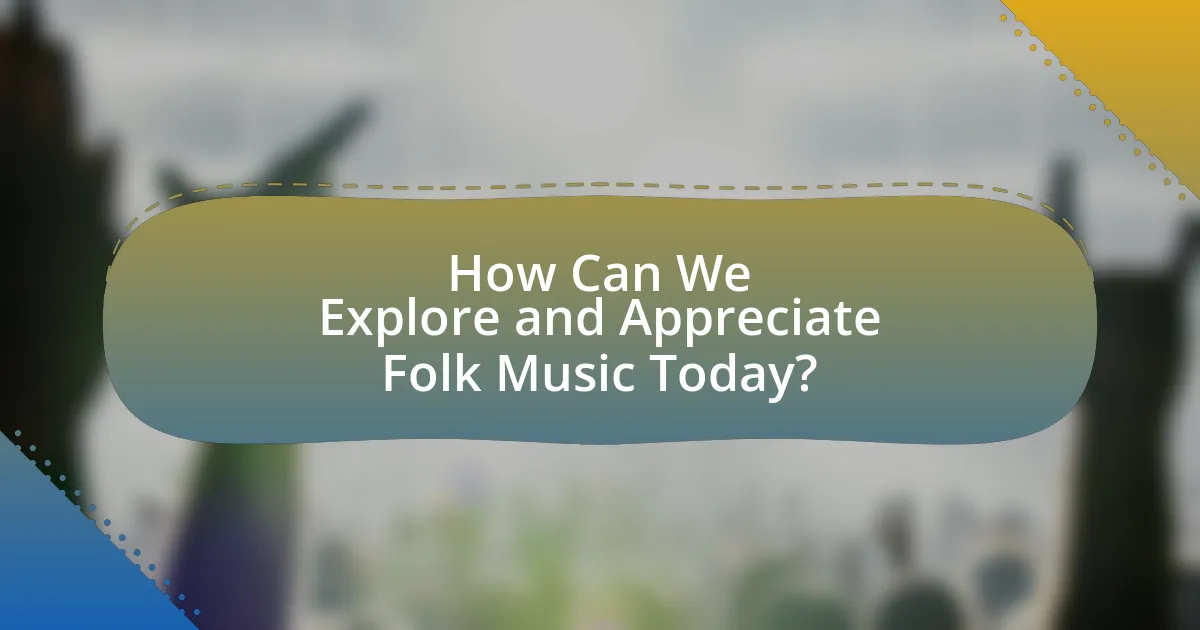
How Can We Explore and Appreciate Folk Music Today?
To explore and appreciate folk music today, individuals can engage with local folk music events, listen to recordings from diverse cultures, and participate in workshops or classes that teach traditional folk instruments and songs. Engaging with local events allows for direct interaction with artists and the community, fostering a deeper understanding of the cultural significance of the music. Listening to recordings, such as those archived by the Smithsonian Folkways Recordings, provides access to a wide range of folk traditions from around the world, highlighting their historical and social contexts. Additionally, workshops and classes, often offered by community centers or cultural organizations, enable hands-on experience with folk music, enhancing appreciation through active participation.
What are effective ways to experience folk music?
Effective ways to experience folk music include attending live performances, participating in folk music festivals, and engaging in community workshops. Live performances allow audiences to connect with artists and the cultural context of the music, while folk music festivals often showcase a variety of artists and styles, providing a broader understanding of the genre. Community workshops offer hands-on experiences, enabling participants to learn traditional instruments and songs, thus deepening their appreciation for folk music’s cultural significance. These methods are supported by the fact that live interactions and participatory experiences enhance cultural understanding and foster a sense of community, as evidenced by studies on music engagement and cultural heritage.
How can attending live performances deepen understanding of cultural heritage?
Attending live performances deepens understanding of cultural heritage by providing immersive experiences that showcase traditional practices, stories, and values. These performances often include authentic music, dance, and storytelling that reflect the historical and social contexts of a culture. For instance, folk music performances can reveal the unique rhythms, instruments, and lyrical themes that are integral to a community’s identity. Research indicates that engaging with live cultural expressions fosters emotional connections and enhances retention of cultural knowledge, as audiences experience the art form in its intended environment. This direct interaction with cultural expressions allows individuals to appreciate the nuances and significance of heritage in a way that recorded media cannot replicate.
What resources are available for discovering folk music traditions?
Resources available for discovering folk music traditions include online databases, libraries, and community organizations. Online platforms like the American Folklife Center’s Archive of Folk Culture provide extensive collections of folk music recordings and documentation. Libraries often house specialized collections, such as the Library of Congress, which offers access to a vast array of folk music resources. Additionally, community organizations and festivals, such as the Folk Alliance International, promote local folk music traditions through events and educational programs, facilitating direct engagement with artists and their cultural heritage.
How can individuals contribute to the preservation of folk music?
Individuals can contribute to the preservation of folk music by actively participating in its performance, documentation, and promotion. Engaging in local folk music events, such as festivals and community gatherings, helps keep traditions alive and fosters a sense of community. Additionally, recording and archiving folk music, whether through audio, video, or written formats, ensures that these cultural expressions are preserved for future generations. Supporting folk musicians by attending their performances, purchasing their music, and sharing their work on social media also plays a crucial role in raising awareness and appreciation for folk music. According to the National Endowment for the Arts, community engagement in folk traditions not only sustains the art form but also enriches cultural heritage.
What practices can be adopted to support local folk artists?
To support local folk artists, communities can implement practices such as organizing regular folk art festivals and markets that provide a platform for artists to showcase and sell their work. These events not only promote local talent but also attract visitors, boosting the local economy. Additionally, establishing partnerships with schools and cultural organizations can facilitate workshops and educational programs that preserve and teach folk art traditions, ensuring their continuity. Research indicates that communities with active cultural events see a 20% increase in local artist engagement, highlighting the effectiveness of these practices in fostering a vibrant folk art scene.
How can one promote awareness of cultural heritage through music?
One can promote awareness of cultural heritage through music by integrating traditional folk elements into contemporary compositions and performances. This approach not only preserves the unique sounds and stories of a culture but also makes them accessible to a broader audience. For instance, artists like Yo-Yo Ma have successfully blended classical music with folk traditions, showcasing the richness of cultural heritage while appealing to diverse listeners. Additionally, community events such as folk festivals and workshops can serve as platforms for local musicians to share their cultural narratives, fostering a deeper understanding and appreciation of heritage among attendees. Research indicates that music education programs that include cultural components enhance students’ awareness and respect for diverse heritages, further supporting the idea that music is a powerful tool for cultural promotion.





